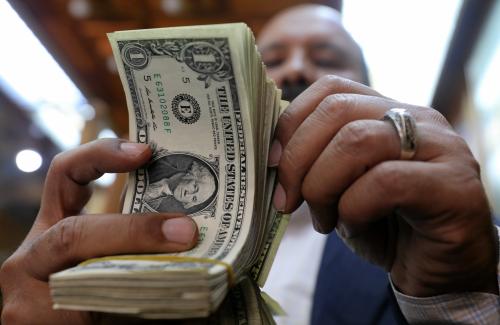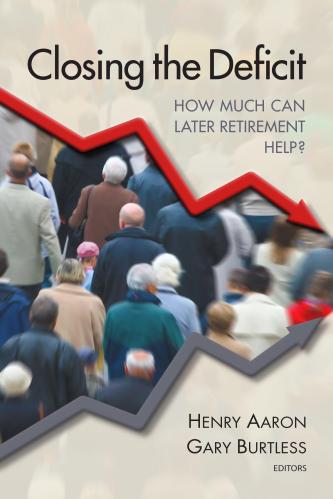This article originally appeared in Pensions & Investments on April 27, 2017.
In its March 20 editorial “DOL can’t have it both ways,” Pensions & Investments opined against state automatic retirement savings arrangements, which are already being implemented by California, Oregon, Illinois, Connecticut and Maryland, and are under consideration by more than a dozen other states. Instead, P&I argues, we should wait until Congress enacts a national program — something it has failed to do for over a decade. I think P&I and others are making “the perfect the enemy of the good” — and the result will be bad.
P&I recognizes that ERISA requirements “often deter smaller employers from sponsoring retirement programs” and that lack of payroll-based savings prevents tens of millions from having retirement security. P&I also recognizes the state “secure choice” automatic IRA savings programs are trying to meet this need. Unfortunately, P&I goes on from there to suggest the state programs be aborted in favor of 401(k)s — which small businesses have been offered, known about and rejected for years.
Some of the issues P&I raises might be real: there is a chance that a few employers now offering a 401(k) could decide to save money by switching to non-contributory individual retirement accounts. In practice, however, it’s hard to see this happening very much: the option to switch to an IRA has been on the table for years and almost no employers choose it. Nor have the folks in Britain — which set up the National Employment Savings Trust a few years ago — found many employers actually dropping their plans.
But most of the criticisms launched at state automatic savings programs are, to be polite, completely bogus.
But most of the criticisms launched at state automatic savings programs are, to be polite, completely bogus.
Consider, for example, the argument that, without the Employee Retirement Income Security Act to protect them, savers will be at the mercy of rapacious states and unscrupulous private investment managers. This specious claim ignores the fact that both other federal laws and the states’ secure choice laws provide those protections — protections, by the way, that almost no IRAs get because most IRAs aren’t covered by ERISA. (Although funded by withdrawals from ERISA-protected pension plans or 401(k)s, most IRAs are not employee benefit plans and therefore not themselves covered by ERISA.)
Or the claim that states will steal the money and use it to prop up their pension plans, which is prohibited under both federal and state law.
Or the claim that incompetent states will invest the money themselves, and badly, when every single state is relying on professional, private managers. In Maryland, (full disclosure: whose program I chair) we put that requirement into law and the program was enacted with enthusiastic and bipartisan support.
But the most cynical has to be the argument that people with nothing at all should be denied a chance to save for their own retirements, that they should be forced to wait until the day — soon after hell freezes over — when their employers turn around and accept the ERISA legal obligations they’ve already rejected.
To be sure, P&I is far from alone in hoping for a national approach. Most of us would rather have a single national automatic savings option from which employees can opt out at any time. The “auto-IRA” approach was once endorsed by both Heritage Foundation and Brookings Institution scholars, by both presidential candidates in 2008, and by both Republican and Democratic members of Congress.
Unfortunately, the auto-IRA has run aground on the shoals of Washington’s poisonous partisanship. Last year, the Department of Labor, enforcer and fierce advocate of ERISA, admitted — begrudgingly and only after lawyers for the states had already shown it to be true — that ERISA doesn’t cover IRAs and therefore doesn’t pre-empt the state efforts. Congressional Republicans (over the objections of Republican state officials) are now voting, largely symbolically, to “disapprove” this DOL ruling.
In my view, the only way to get automatic retirement savings back on the congressional agenda is for states to act first, both to show that the auto-IRA works and to underline the need for a consistent national approach.
Unlike some financial services institutions, P&I is not itself trying to have it both ways: simultaneously arguing for application of fiduciary obligations on states and against their application to IRA salespeople. Nonetheless, if we adopt the financial services argument that we should all wait for the mythical universal-but-private 401(k), some 50-plus million people will continue to work hard, but not save for retirement. And, when many of those millions retire without enough savings, the same states on which some would slam the door on secure choice will be asked to pick up the tab.
Overall, letting states experiment with secure choice automatic savings is a pretty small risk to take. The result won’t be perfect, but it will be better than the mess we’ve had for the past 40 years — and millions of Americans will sleep a little better, too.









Commentary
Op-edThe road to national retirement security goes through the states
May 1, 2017